News » China » Death toll from Beijing downpours rises to 37
News » China » Death toll from Beijing downpours rises to 37 |
- Death toll from Beijing downpours rises to 37
- Police seize fake notes worth $19m
- 10 dead, 1.9 million affected in Beijing downpour
- Wen warns of complicated job situation
- 17 missing in Northwest China floods
- Kenya clinches 8 cooperative documents with E. China's Jiangxi
- Legislators elected in Sansha
- Railway traverses 'sea of death'
- Beijingers survive urban flooding
- China awards 25 overseas college students
- China economy to more balanced
- China awards 25 overseas college students in southern US
- Former publicity chief dies at 83
- Former publicity chief dies at 83
- International online fraud gangs busted
- China alerts rainstorms for East and Southwest
- ASEAN principles in accord with China's policy on S. China Sea settlement
- Stringing past with future
- Weifang kite festival attracts intl hobbyists
- Time Line
| Death toll from Beijing downpours rises to 37 Posted: 22 Jul 2012 12:23 PM PDT Updated: 2012-07-22 23:44 ( Xinhua)
BEIJING - The death toll from Saturday's torrential rains has climbed to 37 as more bodies were retrieved, the Beijing municipal government said Sunday night. About 1.9 million people were affected by the downpour, the heaviest in six decades in Beijing, which also incurred nearly 10 billion yuan ($1.6 billion) in economic losses. As of 4 a.m. Sunday, more than 30,000 residents in districts of Fangshan, Huairou, Mentougou and Pinggu as well as Miyun and Yanqing counties were relocated. | |||||
| Police seize fake notes worth $19m Posted: 22 Jul 2012 12:23 PM PDT Updated: 2012-07-22 21:53 ( Xinhua) BEIJING - Police across China have arrested 463 suspects in counterfeit money-related crimes and confiscated fake notes worth 118 million yuan ($18.5 million) in a special crackdown, said the Ministry of Public Security. In one major case, police in Huilai county in South China's Guangdong Province arrested four suspects and confiscated nearly-finished fake notes worth more than 80 million yuan as well as manufacture equipment in May, according to a statement released Sunday by the ministry. The crackdown is part of a special campaign launched in March against economic crimes. "Fake note cases and the amount of fake notes discovered by financial institutes have been decreasing under sustained crackdowns. Police departments will continue efforts to deal with major cases to ensure people's interests and the country's economic security," said the statement. Figures from the ministry show that a total of 2,821 suspects have been arrested for counterfeit money-related crimes since 2010, and four were given death penalty for manufacturing fake notes. Related StoriesMan jailed for money forgery in Guangdong 2012-07-05 13:23 | |||||
| 10 dead, 1.9 million affected in Beijing downpour Posted: 22 Jul 2012 12:23 PM PDT BEIJING - The heaviest rain in six decades in the Chinese capital on Saturday has left at least 10 people dead, Beijing authorities said Sunday. About 1.9 million people were affected by the downpour which also incurred nearly 10 billion yuan ($1.6 billion) in economic losses, said Pan Anjun, deputy chief of the Beijing flood control headquarters. As of 6 pm Sunday, about 66,000 residents have been relocated, including 20,990 in suburban district of Fangshan alone, Pan said. The rains have caused multiple damages to roads and bridges, including 31 road cave-ins. More than 1,200 houses or buildings have seen leakages and 736 houses were flooded, Pan said. The average precipitation reached 170 mm in Beijing as a whole while that of the urban area hit 225 mm in the 16 hours of heavy rains, Pan said. In Fangshan, the maximum precipitation - 460 mm - was recorded in Hebei township. Road traffic in 12 townships was disrupted. Mobile telecommunication services and Internet access were cut off in six townships, the headquarters said. As of 9 am, 11,827 commercial vehicle insurance claims and 1,968 traffic insurance claims were filed in Beijing, according to the statistics of the Beijing branch of the China Insurance Regulatory Commission. The branch's statistics also show that claims made by farmers for the flooded farmland and the loss of livestock were valued at 51 million yuan. | |||||
| Wen warns of complicated job situation Posted: 22 Jul 2012 12:23 PM PDT BEIJING - Premier Wen Jiabao has warned of new employment pressure amid China's economic slowdown, saying the country will face a more complicated and more severe situation in creating sufficient jobs. China's economy is facing several outstanding problems with its economic growth, which will continue to weigh on the job market, Premier Wen said in a speech on employment delivered at a national conference last week. The full text of the speech was released Sunday by the State Council on the central government's website. Wen said the negative impact of the global financial crisis on China's employment will linger for quite some time, leading to an imbalance between labor supplies and demand. He said China needs to promote employment while maintaining steady and rapid economic growth. "We should pay more attention to developing the real economy, encouraging the development of labor-intensive manufacturing industries and the service sector," Wen said. China's economy grew by 7.6 percent in the second quarter of this year, marking the slowest pace of expansion in three years due to sluggish external and domestic demand. The premier urged authorities at all levels to work harder to create jobs, saying that expanding employment is a top priority in ensuring and improving people's livelihoods. According to Wen, 98 million jobs were created in urban areas from 2003 to 2011 and the registered unemployment rate in cities and towns has stood below 4.3 percent for the past nine years. Wen said the government has helped more than 28 million laid-off workers to find new jobs over the past nine years. More people are leaving rural areas to seek jobs in the Chinese cities, with the number of migrant workers topping 250 million as of the end of 2011, 139 million more than that of 2003, according to Wen. He called for local authorities to implement more proactive employment policies and give more priority to job creation when making national economic development programs and restructuring the economy. | |||||
| 17 missing in Northwest China floods Posted: 22 Jul 2012 12:23 PM PDT Updated: 2012-07-22 21:13 ( chinadaily.com.cn) The number of people missing after floods in Fugu county, Northwest China's Shaanxi province rose to 17, Xinhua reported. Four bodies have been found following heavy rain. | |||||
| Kenya clinches 8 cooperative documents with E. China's Jiangxi Posted: 22 Jul 2012 03:50 AM PDT Kenya inked eight memorandums of cooperation here on Saturday with east China's Jiangxi Province during the visit paid by the African country's Prime Minister Raila Amollo Odinga. | |||||
| Posted: 22 Jul 2012 05:28 AM PDT Updated: 2012-07-22 20:05 ( Xinhua) YONGXING ISLAND, Hainan - The newly established city of Sansha in the South China Sea on Sunday announced a list of 45 deputies to the city people's congress, the local legislative body. According to an announcement issued by the organizing committee for Sansha's first city people's congress, the deputies were elected by 1,100 residents from Xisha, Zhongsha and Nansha Islands on Saturday on Yongxing Island, the government seat of Sansha. A credentials committee has said the election was conducted in accordance with the election law, according to the announcement. The State Council in June approved the establishment of Sansha, a prefectural-level city in South China's Hainan province to administer the Xisha, Zhongsha and Nansha Islands and the surrounding waters in the South China Sea. China's central military authority has approved to form and deploy a military garrison in Sansha. Sources with the People's Liberation Army Guangzhou Military Command said Friday that the Central Military Commission had authorized it to form a garrison command in the city. Yongxing Island is part of the Xisha Islands. Related StoriesSansha moves to create its People's Congress 2012-07-17 21:16China's Sansha starts forming government 2012-07-17 19:10China to form legislature body in Sansha 2012-07-12 15:05 | |||||
| Railway traverses 'sea of death' Posted: 22 Jul 2012 05:28 AM PDT BEIJING - China finished Sunday construction on a railway to Lop Nur, a dried lake in Northwest China's Xinjiang Uygur autonomous region that is known as the "sea of death" for its high salt content. The construction on the railway, which stretches from Hami prefecture on the China-Mongolia border to Lop Nur near China's largest desert, the Taklamakan, started two years ago with an investment of 3 billion yuan ($476 million). The railway was co-sponsored by the Ministry of Railways, the regional government of Xinjiang and a branch of the State Development and Investment Corporation (SDIC), a state-owned investment giant that has a potassium fertilizer base in Lop Nur. Trains will stop at nine stations before reaching Lop Nur, an area that has an estimated 500 million tonnes of potassium salt. At the end of the railway, a cluster of buildings have been built by a SDIC subsidiary for the purpose of tapping local resources. The company already has a salt mining project that turns out 1.2 million tonnes of salt annually and works on an even larger project. China consumes more than 10 million tonnes of potassium salt each year, 70 percent of which is imported. China's reserves total about 457 million tonnes, less than 3 percent of the world's total. The "sea of death" also has large reserves of non-ferrous metals, including nickel, gold and copper, local authorities said. The railway will have a freight capacity of 30 million tonnes a year and lower transportation costs by 80 yuan per tonne, the Urumqi Railway Bureau said. Lop Nur was the largest lake in northwest China before it dried up in 1972 as a result of desertification and environmental degradation. It once nurtured the population of Loulan, or Kroraina which was an ancient city and a pivotal stop along the well-known Silk Road but mysteriously disappeared around the third century. Due to its geological, geographical and historical values, Lop Nur has attracted attention of scientists from home and abroad since the mid-19th century. In 1980, Chinese scientist Peng Jiamu went missing on his fourth group expedition to Lop Nur. His whereabouts were never known. | |||||
| Beijingers survive urban flooding Posted: 22 Jul 2012 05:28 AM PDT
Ten people have died and more than 50,000 have been relocated following the heaviest storm to hit the Chinese capital in 61 years, said the municipal flood control headquarters, citing that the average precipitation reached 170 mm citywide and the maximum exceeded 460 mm. Quite a few motor vehicles floated on the water that was too much to be drained immediately from streets. Some extended helping hands to neighbors and even strangers who found themselves besieged by the floods. Many volunteered to offer rescue, helping drag vehicles out of flooded areas and transporting passengers back home by individual means. At least 80,000 travellers were stranded at the Beijing international airport due to the cancellation of more than 500 outbound flights, hundreds of taxi drivers and motorists in the closest big urban neighborhood of Wangjing drove to the airport to give free rides to strangers, who were advised by the airport to accept such assistance under the precondition of ensured personal and property safety. The city's sanitation workers also went above and beyond the call of duty to clean up the mess caused by the flooding. One sanitation worker was spotted submerging himself almost completely to clear a blocked sewage drain in Haidian District. Other workers were seen acting as "human road signs" near the Beitaiping Bridge, standing in deep pools and guiding vehicles to evade manholes, as a lot of manhole covers were pressured out by underground water to nowhere. Li Fanghong, a police inspector in suburban Fangshan District, lost his life while trying to rescue villagers who were trapped by the floodwaters. Li was fatally electrocuted by a live wire that had fallen into the water late Saturday afternoon. Li's colleagues said he rescued 50 people in the village of Fenghuangting before being hit by the fatal shock. Fangshan was lashed hardest by the rains, receiving 460 mm of precipitation. Traffic in 12 townships was disrupted, while mobile telecommunication services and Internet access were cut off in six townships. In Dongjie Village, more than 40 people were forced to evacuate to the roofs of their homes after a nearby river bank was breached by rain-triggered flooding. "It's the first time I've ever seen this," said a villager in his 30s. Torrential rains triggered mudslides in Fangshan and Huairou districts and Miyun County, leaving one person missing and another injured. No deaths resulting from the mudslides have been reported so far, the flood control headquarters said. While many cheered acts of kindness and bravery urbanites showed during the storm, others expressed anger against patrolling police who handed out violation tickets to stranded cars that had yet to be reclaimed by their escaped owners. Expressway operations were also criticized, as workers continued to collect fees at toll gates on the airport expressway, despite vehicles, in long queues, mired in knee-high water. Xia Xueluan, a Peking University sociologist, said city authorities should take a more "humane" approach when handling such emergencies. "More flexible measures should be adopted in those cases," Xia said. The urban drainage system received fierce blame, once again, for the flooding, as heavy rains and snow often disrupted traffic in recent years. | |||||
| China awards 25 overseas college students Posted: 22 Jul 2012 05:28 AM PDT Updated: 2012-07-22 16:35 ( Xinhua) HOUSTON - Twenty-five Chinese students from colleges in eight southern US states received an annual Chinese government award in Houston on Saturday. At a ceremony hosted by the Chinese Consulate General in Houston, Deputy Consul General Xie Yunliang handed out the 2011 National Scholarship for Outstanding Self-Financed Chinese Students Abroad. The recipients are from more than 10 colleges in southern US states, and their majors vary from genetics, biology, economics and chemistry to computer and environmental sciences. This year, the award, which was established in 2003 by the Chinese government, would be conferred on 490 Chinese students pursuing study abroad worldwide. According to Xie, the number of overseas Chinese students totalled 2.25 million by the end of 2011. In 2011 alone, about 340,000 Chinese students went abroad for studies, 19.3 percent higher than in the previous year. Xie said the Chinese government attaches great importance to the young generation and will create favorable environment for their development. Related StoriesFor students of Chinese, tech tools offer fun and ease 2012-07-20 11:33Chinese students in US coming home for jobs 2012-06-28 08:19 | |||||
| China economy to more balanced Posted: 22 Jul 2012 05:28 AM PDT KUALA LUMPUR - China's economic growth is expected to rebound in the second half of 2012 and the country is well on the way to achieving more balanced growth, according to analysts in Kuala Lumpur. China's National Bureau of Statistics said earlier this month the nation's gross domestic product (GDP) grew 7.6 percent in the second quarter, the lowest growth since the second quarter of 2009. However, analysts said the dip was expected and China's economy was likely to grow at a faster pace in the second half of the year, voicing confidence in China's economy. Prasenjit Kumar Basu, an economist at leading Malaysian investment bank Maybank Kim Eng, said China's economic growth had rebounded since April. "For China, it is important to consider the monthly data, which suggest that the economy reached its cyclical trough in April 2012, and began a modest recovery in the subsequent two months," he told Xinhua in a recent interview. In a report published after the announcement of the second quarter GDP data, Basu said the impact of a strong rebound in bank lending in May and June as well as the additional policy rate cut by the central bank might be seen during the rest of the year. Maybank Kim Eng maintains its prediction of a real GDP growth of 8 percent for China this year. Basu's view was echoed by Anthony Dass, an economist with Malaysian Industrial Development Finance Berhad, an investment research house. "The second quarter of 2012 growth was above our expectation and we believe the economy should improve further in the second half of 2012," Dass told Xinhua. Basu suggested that a slowdown in growth was actually good for China, as it would help reduce some of the internal imbalances in the economy. He praised the Chinese government's bid to restructure the economy by boosting domestic demand while lessening its dependence on external trade and investment. "China is well on the way to achieving a more balanced pattern of growth in the medium term, with private consumption playing a more important role," he said. Though concerned that the stimulus might worsen the imbalance in near term, Basu said China's current policy of easing monetary policy while retaining the curbs on speculative property purchases was the right mix. China's economic performance is closely watched by Malaysian analysts, partly because bilateral trade between the two countries is booming in recent years. According to the latest figures from Malaysia's Ministry of International Trade and Industry, China remained Malaysia's biggest import source and trading partner during the first five months of 2012. "With the second quarter of 2012 assumed to have reached the 'trough' and expecting upside in the second half of 2012, it should bode well for Malaysia's economy, given that our exposure to China is about 13 percent of GDP in terms of direct trade," Dass said. He considered China's focus on domestic consumption a new support for the Malaysian economy. "An increase in domestic consumption in China should benefit Malaysia as our exposure to China's household sector is about 16 percent at the moment, while to domestic investment it is about 20 percent," he noted. "Hence, when domestic consumption improves, it also means that Malaysia's exposure to China's households is poised to increase to some extent," he said. | |||||
| China awards 25 overseas college students in southern US Posted: 22 Jul 2012 01:25 AM PDT Twenty-five Chinese students from colleges in eight southern U.S.At a ceremony hosted by the Chinese Consulate General in Houston, Deputy Consul General Xie Yunliang handed out the 2011 National Scholarship for Outstanding Self-Financed Chinese Students Abroad. | |||||
| Former publicity chief dies at 83 Posted: 22 Jul 2012 02:23 AM PDT Ding Guangen, a former publicity chief of the Communist Party of China (CPC), died of illness at 83 years of age Sunday morning in Beijing. | |||||
| Former publicity chief dies at 83 Posted: 22 Jul 2012 01:58 AM PDT Ding Guangen, a former publicity chief of the Communist Party of China (CPC), died of illness at 83 years of age Sunday morning in Beijing. | |||||
| International online fraud gangs busted Posted: 22 Jul 2012 12:16 AM PDT Shanghai police said they had busted two gangs who swindled firms in a number of countries out of 2.4 million yuan (US$387,096) through online fraud. | |||||
| China alerts rainstorms for East and Southwest Posted: 21 Jul 2012 10:32 PM PDT BEIJING - China's national observatory issued Sunday an orange alert for rainstorms expected to hit the country's eastern and southwestern regions over the coming 24 hours. Some parts in Heilongjiang, Jilin, Liaoning, Inner Mongolia, Hebei, Tianjin, Shandong, Sichuan, Yunnan, Guangdong and Hainan will see heavy rains, with downpours and thunderstorms in some places, the National Meteorological Center said. On Saturday, the heaviest rain in 61 years lashed Beijing, leaving 10 people dead and 14,500 city residents evacuated, municipal authorities said. According to statistics at 20 weather observing stations in Beijing, the city received 170 mm of precipitation on average as of 6 am, the largest since weather records from 1951. A township in Fangshan district was hit by the largest rainfall of 460 mm. The center issued Saturday evening its first orange rainstorm alert since 2005, predicting the rain to last over 20 hours till Sunday morning. Chinese meteorological authorities use a four-tier color-coded weather warning system from "blue," "yellow" to "orange" and "red." Meanwhile, a persistent heat wave will continue to scorch regions south of the Yangtze River, with temperatures reaching up to 37 degrees Celsius, the center said. | |||||
| ASEAN principles in accord with China's policy on S. China Sea settlement Posted: 21 Jul 2012 10:32 PM PDT BEIJING - The Association of Southeast Asian Nations (ASEAN) has agreed on a six-point statement on the South China Sea issue that goes in line with China's ever-lasting will of turning the disputed waters into a sea of peace, friendship and cooperation. Friday's statement was an official response to the South China Sea issue after the ASEAN failed to reach a joint communique at the just-concluded foreign minister's meeting in Phnom Penh. The statement covers the implementation of the Declaration on the Conduct of Parties in the South China Sea (DOC), the need for an early conclusion of a regional code of conduct, the full respect for the universally recognized principles of international law, the continued exercise of self restraint and non-use of force by all parties, and the peaceful resolution of conflicts. On the issue of South China Sea as well as other international disputes, China has been pursuing a policy of seeking peaceful solutions based on one-on-one negotiations. In response to the six-point principles, Foreign Ministry spokesman Hong Lei said China values its relationship with the ASEAN and is willing to work together with the group's members to implement the DOC and "open to consultations with the ASEAN on the conclusion of a Code of Conduct in the South China Sea." Looking back on last week's ASEAN meeting, the 10-nation bloc failed to issue a joint communique for the first time since it was founded in 1967. That failure was due to the Philippines' and Vietnam's undue requests to include the bilateral maritime dispute in the document and attempts to hype their disagreements with China. Most ASEAN members have sent a clear signal that they will not meddle in the bilateral disputes and value stable and fruitful bilateral ties with China. Friday's six-point principles, which are in accord with the DOC, reaffirmed the bloc's stance of pursuing a peaceful resolution of conflicts. The measure also hinted at the bloc's willingness to maintain close cooperation with China and reject any inappropriate moves against the DOC. Cambodian Deputy Prime Minister and Foreign Minister Hor Namhong said Friday that ASEAN "does not stand up against China, but negotiates with China based on the DOC." As the saying goes, "one flower makes no garland." The principles, which came after Indonesian Foreign Minister Marty Natalegawa's "intensive shuttle diplomacy" to restore ASEAN unity, once again display the aggressive ASEAN members' isolated role within the bloc on the South China Sea issue. Though they agreed not to complicate and intensify the South China Sea issue under the DOC, the members adopted unilateral moves that severely infringed on China's maritime territorial sovereignty. Only when signatory countries first abide by the DOC can they proceed to sign and enforce a legally binding "code of conduct." | |||||
| Posted: 21 Jul 2012 10:32 PM PDT They come in all shapes, sizes and colors, and they had all gathered for an exhibition in Beijing. Liu Xiangrui marvels at the kite makers and their devotion to a traditional craft. It was all there - from a huge dragon kite 100 meters long to tiny ones about the size of a name card. There were classic swallow-tailed kites to luminous modern inventions made from carbon fiber. And, they were all set to fly, each and every one a masterpiece. The recent exhibition jointly organized by the Beijing Folk Literature and Art Association, Beijing Kites Association, and the Solana Lifestyle Shopping Park in Beijing was a real treat for the passionate followings that gathered. They were proof that kite making and flying, with a long history and rich culture, have never faded from the Chinese people's life. Kites still claim a unique hold on many as a popular outdoor hobby. China has pushed hard to preserve its traditional, cultural heritage and the kites, past and present, have been included as part of the nation's intangible cultural heritage, according to Yu Zhihai, the deputy chairman of the Beijing Folk Literature and Art Association. "Society's demand for traditional arts is increasing, which has helped their preservation," Yu says. "We need folk arts which bear unique national traits to keep our balance in an increasingly globalized world." Kites were first used as military signals in China about 2,800 years ago and became an outdoor hobby in the Song Dynasty (960-1279). Classic kites use bamboo for spars and paper for sails. They developed into many different shapes and forms, which often convey specific messages related to happiness, longevity and good luck. They also gained distinctive features in different parts of China. Beijing, which has six centuries of history in the art, is regarded as one of China's four major kite-production centers, renowned for its graceful and exquisite kites. Hao Deli, who demonstrated his craft before a crowd of kite lovers at the exhibition, is noted for his Beijing-style dragon kites which are often huge, always elegant and vividly painted.
Unlike many craftsmen whose skills were passed down through generations, Hao is self-taught. "But I have my own advantages," says the 68-year-old retiree. "I have a good sense of three-dimensional space, and so I already have the kite in my mind before it's there." The long-time designer of machine tools says his "occupational habit of going for accuracy was a plus for the meticulous work". Hao makes all types of traditional kites, but favors dragons. "The dragon is a Chinese totem," he says. "Getting huge dragon kites to fly is a sensational feat for both the player and his audience." In the past, dragon kites were the exclusive toys of the imperial family, and commoners were relegated to centipede-shaped kites. Hao spent days studying the only Beijing-style dragon kite, which was kept in the Palace Museum, and carefully noted its complicated traditional mechanics and design before he finally produced his copies. His creations have won numerous awards and his favorite pastime was to amaze crowds gathered at Tian'anmen Square with his huge dragon kites. Open fields are best for kite flying, he says, but the urban sprawl has reduced the number of suitable spaces. There are just too many skyscrapers and cars around. While Hao strives to revive and improve traditional techniques, Ha Yiqi, another celebrated Beijing-based kite artist, represents the new as he introduces modern technology into an old craft. Kites produced by Ha's family have a history of 160 years and are known for their delicate art and exquisite moldings. The kites are eagerly sought after by collectors. Ha, now 58, started learning from his father when he was 10. He still remembers his early attempts at innovation. His father had chided him for using a square frame when it should be round, and he had replied: "I want to be different." "Of course we can't abandon the traditional techniques. But if we dwell on past achievements instead of keeping up with modern tastes and trends, Ha's kites may die in my hands." After he saw a geometric kite bigger than a room on an overseas trip, Ha was impressed enough to attempt one when he returned home. He also started using his training in Western art and made bold updates with traditional kite painting techniques. He introduced geometrical patterns, gradient shades, blue-and-white porcelain paintings, batiks and many Western artistic elements into his kites. He was also the first to use glass frames for his kites. All his experiments have made him well-known both at home and abroad. Besides collecting international awards regularly, he also holds exhibitions of his kites. Eager to share his knowledge and actively exchanges ideas with fellow kite makers, and his apprentices, Ha has published a book on his craft. The Ha family kites were listed as a national intangible cultural heritage in 2003. Contact the writer atliuxiangrui@chinadaily.com.cn. | |||||
| Weifang kite festival attracts intl hobbyists Posted: 21 Jul 2012 10:32 PM PDT Kite-flying can be a consuming passion as Chitraleka Basu finds out at the Weifang International Kite Festival, which had attracted an ardent gathering of international hobbyists. Time line of Weifang kite-making
It was a bit of a surprise to find Qian Jianguo on stage at the ceremony of the 28th Weifang International Kite Festival early this year. Qian, a diminutive man of 68, performed his own little act, twirling and gliding on stage, imitating the motions of his modest eagle-shaped kite - a self-designed contraption that can fly even without wind to keep it afloat. We had met him earlier in the day, and he never gave a hint that he would be a star turn among the musical celebrities with huge fan bases in the audience. His self-effacing attitude, we found, was endemic among most Weifang residents. They let the kite take center-stage and build their lives around it. Take Tang Ang, for instance, whom we met at the Weifang Fuyanshan International Kite-flying Ground, minutes into the first day of the festival. Standing underneath a glowing morning sky crisscrossed by whizzing kites of all shapes - centipede dragons, long-tailed phoenixes, angular stunt kites, even a motorcycle - Tang tells us about his strong attachment to kites. He had quit a good job with a phone-parts manufacturing company and taught himself to speak English so he could be a better advocate for Weifang kites beyond Chinese shores. Tang, in his 30s, now works as a sales manager with a kite-manufacturing company that supplies its products to Houston in the US state of Texas. "Weifang, as you know, is the kite capital of the world, and being a Weifang native, I wanted to be a part of its kite culture," he says. Qian Jianguo was a late entrant to this culture. He took up the craft after retiring from a factory in 2005 - "hoping to add a bit of color to my life" - and learned it by keenly watching others. Now, of course, it's the only life he knows. "I find it's a great way to make friends across the world through flying kites. I feel I am working as a cultural ambassador for the country, helping foreign friends to know about Chinese culture," he says. The Malaysian kite festival held at Johor Bahru in February 2012 was a high point in his career. "There was no wind and mine was the only kite that could take off. All cameras were trained on me." It took Qian about three years to develop that special technique, but it was worth the effort. "At that moment, I felt like a kite myself, soaring in the sky." This being the Year of the Dragon, according to the Chinese zodiac, the mythical beast was a hands-down favorite at the festival, in which 110 teams from 67 countries participated. They brought kites of every size - from 20 to 600 meters. While most were designed after the traditional centipede dragon model - which is generic to Weifang - there was at least one that did not show the dragon at all, but suggested its presence. Based on the theme of Weifang's economic development, the kite, presented by the Weifang Kite Committee, was a giant rose-pink open-ended box, on which blue clouds and waves were painted. "It's a symbol of the dragon who lives in the seas," says team leader Liu Ziqing. "We would like to see China touch the heights of development, fly up into the skies like a dragon." Sun Zhanfu, who has been a Weifang kite festival regular since its inception in 1984, brought his own hand-crafted dragon, more than 200 meters long. "Making kites is great fun," he tells us. He has more than 10 apprentices to whom he has been teaching the art of making a traditional Weifang kite. "Weifang kite-making technique has been listed among the national intangible cultural heritages," he says, visibly pleased with his role in passing on the time-tested craft to younger generations. Some people were more focused on winning. Zhong Jian's dragon lay all taut and sprawled on the ground. He was waiting for a stronger wind to pull it up. "But once it does, I'll easily win the competition," he tells us. "And even if I don't, I'll compete again next year." Meanwhile, a giant parachute-shaped soft kite in rainbow colors that a crowd of people had been trying to fly for a while, lifted a few meters off the ground only to drop again, sweeping across the ground. Spectators scurried to get out of its way, not wanting to get caught in the maze of a 100 strings attached to it. Those in the fore of the army of 40-odd people trying to hoist it up fell and rolled a few meters out of the way. A stunt kite team from Taiyuan in Shanxi province pulled off an awesome feat. Manipulated by four team members, four kites twisted and twirled, rolled and dove into the air, to the tune of lively songs. The kite runners skipped backwards and bent over, touching the ground almost, as if dancing in sync with the kites they flew. "I fell in love with kite ballet when I first saw a video on a foreign website about 20 years ago. Few Chinese kite flyers were into the sport at that time," says Niu Yongjun, their leader. "An American kite team brought stunt kites to the Weifang kite festival in 2009. They helped us buy a set and taught us the basics. When the wind is below 10 kilometer per hour, we select slow movements. It seems you can do anything with your kite. I just love the feeling." Dan Tonio of San Diego, California, was busy fixing a four-line stunt kite. He runs what he calls the last American kite manufacturing company. Dan was in Weifang not to compete or pursue business interests, but for the pure joy of "hanging out with friends from all across the world". But how much longer could this ancient sport possibly hold out against the tide of more modern forms of entertainment and shrinking attention spans? "You can only hope that events like these might help take the cause forward, but there's no guarantee that might actually happen," says Tonio. One of Weifang's major lures, we realized, was the prospect of meeting old friends and making new ones. As Muammar Quaddafi, a Malaysian who runs the Borneo International Kite Festival, says, "It is about building relationships through kites. The kite-flying fraternity is like one big happy family, cutting across cultures." And while Weifang as the host city was the seat of many such reunions, it was also, as participant Wang Jiahua says, "an opportunity to develop local economy and for Weifang culture to go out into the world". Cui Yongli, a Qingdao native and a Weifang festival veteran who has made winning a habit during the past 20 years, has attended several festivals abroad. "Weifang is mounted on a far larger scale," he says of the annual April festival. "Here you get to see a lot more in terms of people and kites." His own offering is a case in point. From enormous geometric tiered kites, to the regulation centipede dragon to traditional kites with floral images - one could find every sort under his huge tent. For a while he held the record for the longest snake-shaped kite, measuring slightly more than 882 meters. "The kite is not just an industry in Weifang but a medium that could make the city earn its place in the world," says Liu Ziqing. Which is not to discount the value of local pride. At 7, Liu Yixuan is already a seasoned festival-goer, having been here in three past seasons. He pointed gleefully to an enormous soft kite with hedgehog spikes and fuchsia colors, switching allegiance the next moment to a slow-rising motorbike-shaped kite that caught his eye. "I am definitely going to tell my classmates about the flight of these enormous kites at school tomorrow," he says. Wang Qian contributed to this story. Contact the writers at sundayed@chinadaily.com.cn.
| |||||
| Posted: 21 Jul 2012 10:32 PM PDT Legend has it that about 2,500 years ago, a famous philosopher, Mozi, who lived in Weifang, spent three years making a wooden bird that could fly. That was the earliest kite in history, way before Leonardo da Vinci made a similar experiment in 1485. Later, a renowned carpenter, Lu Ban, introduced bamboo frames to make the contraptions lighter and easier to fly up in the air. With the invention of paper in the Eastern Han (AD 25-220) period, much lighter kites became possible. At first, kites were used to gather and send military intelligence and were also used as communication and meteorological tools. During the Tang Dynasty (AD 618-907), flying kites became a recreation and people began tying bamboo whistles to kites. Flying in the wind, the bamboo whistle was imagined to be singing like a zheng, a stringed instrument similar to a zither, giving kites the name feng zheng (whistle in the wind). Soon Chinese kites traveled out of the country and by the end of the 13th century, Italian traveler Marco Polo introduced stories about Chinese kites to Europe. Flying kites is a favorite pastime in today's China, a popular form of exercise, especially in spring. It is also a way of giving free rein to one's wishes and hopes for the future. The images and writing on kites are meant to usher in blessings, happiness and longevity.
Kite Styles Bunch: It is made up of several kites that are connected to each other by strings. The dragon-headed centipede kite is a typical example. Hard-winged: The wing-shaped frame is formed by two horizontally placed bamboo strips, leaving a part in the middle for wind to pass through. Often the image is an illustration of a scene or figure from mythology or history. Soft-winged: The frame, made of thin, malleable bamboo strips, is soft - suitable for making bird- or insect-shaped kites. Plank-shaped: This is a flat-framed structure. A long tassel is usually attached to the lower part of the kite for balance. Since it is easier to make and fly, the plank-shaped kite is most common. Barrel-shaped: Also called a three-dimensional kite, the "barrel" frame is typically used to form a lantern or flower vase. Free-style: It features different types of frame structures, usually made using newer materials and techniques, such as the 108 heroes kites inspired by the classical work The Water Margin, and the luminous kite. |
| You are subscribed to email updates from Update » News » China To stop receiving these emails, you may unsubscribe now. | Email delivery powered by Google |
| Google Inc., 20 West Kinzie, Chicago IL USA 60610 | |



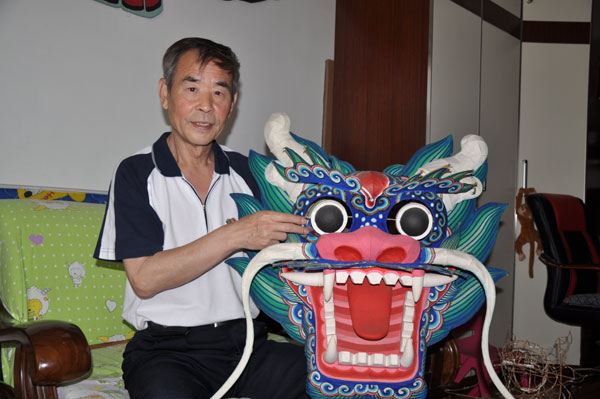
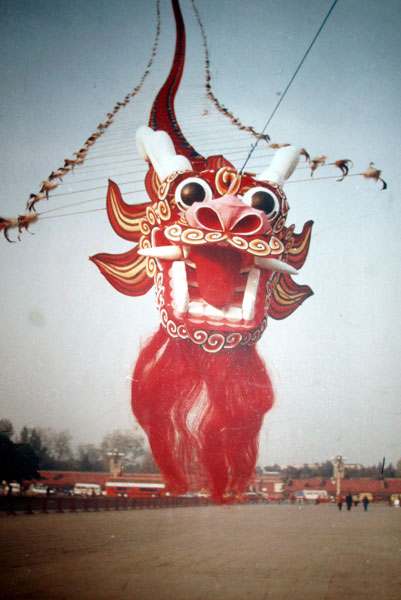
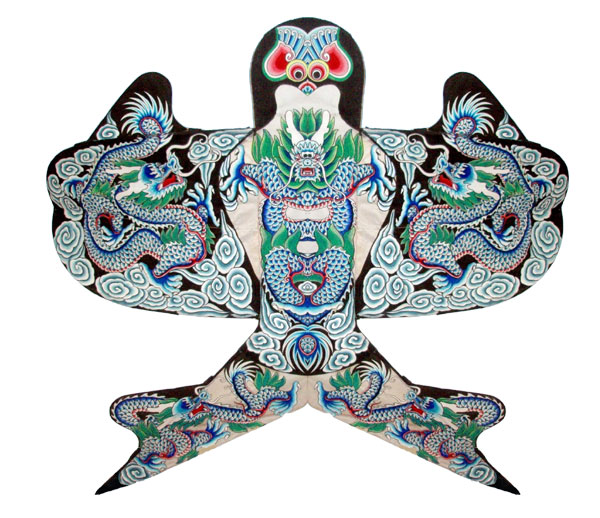
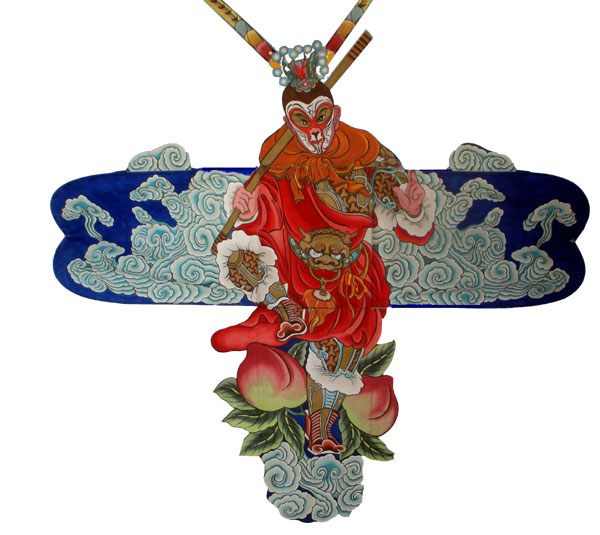
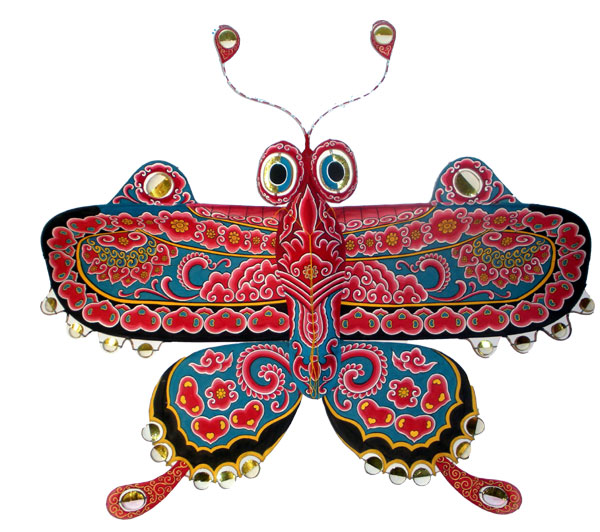


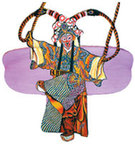

Comments